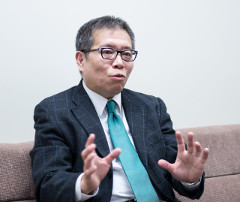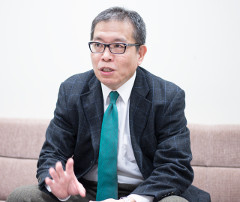US has enjoyed seigniorage as a key currency country after WWII

Why has something like virtual currency been born? In order to understand the cause, it may be interesting to trace the history of international finance, particularly after World War II (WWII). In 1945, the International Monetary Fund (IMF) Agreement was signed in order to rebuild the international currency system which had been disrupted by WWII, and the Bretton Woods system came into effect. This was a gold exchange standard, a system where each member country would peg its currency’s exchange rate to either gold or the U.S. dollar, therefore indirectly linking its currency to gold at the standard of rate of thirty-five dollars per ounce. However, although the member countries needed sufficient dollar reserves to peg their currencies to the U.S. dollar, they were in a devastating state due to WWII, and were experiencing extreme dollar shortages. Therefore, these countries were provided with the U.S. dollar through official channels under such economic recovery aid programs as the Marshall Plan. This was how the U.S. became a global key currency country. Behind this was the fact that the U.S. had experienced very little damage from WWII, and it was the only active major industrial nation in the world, and therefore naturally running a trade surplus, plus there was confidence in the U.S. dollar. However, later on, the U.S. got itself involved in conflicts around the world. As a result, the country’s military spending and budget deficit rose, its economy became inflationary, and its trade balance turned to deficit. Even then, the U.S., being a key currency country, would continue to issue dollar bills, and other countries would continue to receive them, so the trade deficit was easily financed. In other words, the U.S. fell into abusing its seigniorage, the so-called privilege of paying with debt. European nations, which were gradually achieving economic recovery, became very resentful of this. So, in the 1960s, countries such as France began to publicly demand for the dollar reserves they were holding to be converted into gold. The U.S. had no choice but to comply, and ended up rapidly reducing its gold holdings. But then, in 1971, the U.S. unilaterally declared the suspension of convertibility of the dollar into gold. This was the so-called Nixon Shock. It was the demise of the Bretton Woods system, and after going through the Smithsonian system, the shift to a flexible exchange rate regime would be made by the major nations.
The sequence of events from the end of WWII to the Nixon Shock shows how the U.S. became a key currency country. At the same time, it represents non-key currency countries’ belief that they could not let the U.S. enjoy the privilege of paying with debt forever, a form of tyranny by a key currency country, or seigniorage. It is possible to say that these events have made the conflict between the two sides more and more pronounced.
Money flow of the dollar which continues to increase influence even in the flexible exchange rate regime
In principle, the shift to a flexible exchange rate regime meant that the ground for competition among the currencies of different countries was established. Therefore, the U.S. was no longer the only country which could determine financial policies, and other countries also had the same degree of freedom to determine them. However, the U.S. dollar continued to be a key currency. Among academics, the reason is explained using such terms as “inertia” and “network externality,” but in essence, it is because switching a reserve currency is a hassle. In fact, the U.S. established various advantages for the dollar under the Bretton Woods system, and there was nothing anyone could do about them. For instance, trade in primary commodities such as oil and grain is still basically all conducted in dollars. This is because Chicago has been established as their market, and every country is using the dollar, a third-country currency, in its dealings. In addition, in bank-to-bank transactions on the interbank market too, the dollar is almost exclusively used as the vehicle currency. For instance, when we exchange yen to baht, it looks like yen is directly converted into baht to our eyes, but in reality, the dollar is inserted as a bridge currency between yen and baht in the interbank transaction. In other words, the dollar is being used as the transaction currency even though it is the currency of a third-country, and not that of either of the countries directly involved in the transaction. So even though the shift was made to a flexible exchange rate regime, the dollar remained as the most important currency in this respect.
Of course, the U.S. could no longer take explicit advantage of the privilege of paying with debt as it had done under the Bretton Woods system, but as it had an advantage as a key currency country, the capital which surpassed its current account deficit would be flowing into the country through investments by neighboring countries in the forms of government bonds and other financial products. And in the opposite direction, the surplus funds from the U.S. would be reinvested in emerging countries. This was the money flow that would be created. In other words, a structure was created where the U.S. would borrow with government bonds at low interest rates, and then lend to other countries at high interest rates. In the 2000s, the U.S. got to the point where it would call itself the world’s venture capital. Meanwhile, the Asian currency crisis occurred in 1997, and the situation in many Asian countries became critical. This crisis is said to have occurred due to the Asian countries conducting short-term borrowings in dollars from the U.S. It was literally an economic crisis caused by the dollar-centric money flow structure. And then in 2008, the global financial crisis occurred, triggered by the subprime loan crisis caused by the collapse of the U.S. housing bubble. In short, be they in the Eurozone or in Asia, these currencies were fully integrated into the money flow of the dollar, and its influence was running very deep.
Virtual currencies are an antithesis to the current financial system

Breaking away from the influence of the dollar, and preventing the U.S. from enjoying its seigniorage, was essentially a war of legal currencies. This war ended up causing a turn of the tide in 2008, creating a new conflict. In the face of the global financial crisis, central banks in different countries adopted policies where they would print more money and inject it into banks in order to save them, which caused the public’s resentment to grow. In the U.S. too, the outcry to destroy the Federal Reserve Bank (FRB) and Wall Street rose. In other words, the majority of people who were outside the existing financial system started to raise their voices, and criticism of the system intensified.
It was at this very time that a person by the name of Satoshi Nakamoto published a paper on a distributed currency system based on P2P (a system where data is exchanged between devices that are equal peers on the network by connecting them directly), something which did not rely on third-party institutions. It used the so-called blockchain mechanism. At the root of this system was a libertarian ideology of how seigniorage should not be monopolized by the state and its financial institutions. In other words, the antithesis to the existing financial system, where central banks were reigning at the top, had become an idea which would actually take form. In this way, in 2009, Bitcoin, which was known as virtual currency, was born.
Naturally, Bitcoin’s focus was on its function as a payment system. For instance, without expensive fees or complex procedures, it made the highly secure wiring of money and payments across borders possible. Later, the price spike caused by people’s expectations and attention became the main focus, and the currency would be viewed as a store of value and a speculative investment. But Satoshi Nakamoto and others who were involved in creating Bitcoin must have had higher ideals than that, and they must certainly be lamenting the current situation where virtual currencies have become merely a financial product.
What is now required is to acquire financial literacy
That said, Bitcoin’s mechanism had its own problems. There was a limit to its issuance. In other words, it had adopted such naive mechanism to control the amount of its supply. This was one of the factors which caused the spike in its price, and when price volatility (the expected rate of fluctuation in the price of a financial product) is high, the currency does not work well as a payment system in the first place. On the other hand, moves are being made by central banks and private financial institutions to issue their own virtual currencies. For instance, the Bank of Japan (BOJ) has much more knowhow on controlling the amount of currency supply, so a digital currency issued by the BOJ is likely to maintain a very stable value. As a result, if all economic actors are to have an account at the BOJ, not only will the payments be smooth, but the effect of monetary policies will also be maximized. However, anonymity and everything else will be lost. If the currency is linked to the My Number system, everyone’s personal financial information will be known to the BOJ, and to the Japanese Government. While tax evasion will not be possible, they will know our daily spending habits. Seigniorage will be completely monopolized by the official authorities, and a super-centralized structure, a super-controlled society, will be created. The extreme opposite of this is the completely free, decentralized, and distributed virtual currencies such as Bitcoin. We can basically conduct our economic activities freely, and we will be less constrained by government. Virtual currencies have the potential to build a free society that fights back a controlled society. The war on seigniorage was at one time the war among legal currencies, but with the birth of virtual currencies, the war is now changing to one between legal currencies and private currencies. And we are now living in a period of transition where our society could be swayed to becoming either super-centralized, or decentralized and free.
Looking at the current state of virtual currencies, where they have fallen to become a financial product and a speculative investment, we cannot help but lament what has gone wrong. Was the mechanism of virtual currencies too naive? Or was the timing bad, just as quantitative and qualitative monetary easing was being implemented? Or were we, humans, too immature to have a good command of virtual currencies? Probably all of the above have caused the current state. Of course, it is also positive that there are many choices for the future, including virtual currencies issued by private financial institutions and companies. But the choice is ours to make, and that is why our financial literacy will be put to the test. Not only that, as we live through this period of transition, should we not learn more about people and society in order to master the use of new technologies?
* The information contained herein is current as of May 2018.
* The contents of articles on Meiji.net are based on the personal ideas and opinions of the author and do not indicate the official opinion of Meiji University.
Information noted in the articles and videos, such as positions and affiliations, are current at the time of production.

